|
History of Texas
From Discovery to Independence and Statehood |
|
|
|
Discovery
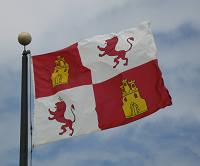 The discovery of America in 1492 by a Spanish expedition led by Christopher Columbus was swiftly followed by further exploration. In his four voyages (1492-1503) Columbus explored or visited the Bahamas, Cuba, Hispaniola, Jamaica, Puerto Rico, the Antilles islands, Venezuela in South America, and Central America from Honduras to Panama. Although Columbus did not find the westward passage to China and the Indies, he discovered the continent that became known as America. News of the New World spread rapidly throughout Europe and launched an era of exploration and venturous enterprises.
The discovery of America in 1492 by a Spanish expedition led by Christopher Columbus was swiftly followed by further exploration. In his four voyages (1492-1503) Columbus explored or visited the Bahamas, Cuba, Hispaniola, Jamaica, Puerto Rico, the Antilles islands, Venezuela in South America, and Central America from Honduras to Panama. Although Columbus did not find the westward passage to China and the Indies, he discovered the continent that became known as America. News of the New World spread rapidly throughout Europe and launched an era of exploration and venturous enterprises.
Spanish explorer Juan de Grijalva sailed from Cuba with four ships in April 1518 on a voyage of discovery. His main pilot was Anton de Alaminos. The expedition sailed west to the coast of Mexico and then northwards. Grijalva reached Texas at Galveston Island later that year.
Explorer Alonso Alvarez de Pineda first sighted Corpus Christi in 1519, on the Catholic Feast Day of Corpus Christi, while mapping the Texas coastland. He also visited Galveston Island. Pineda was sponsored by the governor of Jamaica, Francisco de Garay, and spent six months mapping the Gulf Coast from northwest Florida to Tampico, Mexico. That same year, conquistador Hernan Cortes set out from Cuba with 500 men and landed in the Yucatan peninsula with the intention to explore and secure the interior of Mexico.
Cortes traveled north and west along the coast of the Gulf of Mexico, to an area that Juan de Grijalva first explored a year earlier, and founded Veracruz, the first colonial settlement in Mexico. Cortes proceeded inland, forming alliances with American Indian natives and, through diplomacy, coercion and warfare, overthrew the Aztec empire and gained control of most of Mexico within two years, in 1521.
Exploration
In 1520, Captain Diego de Camargo founded the town of Garay near the mouth of the Rio Grande. Governor Garay attempted to send Pineda back to establish a colony on the Pacuno River but the expedition ended in tragedy when hostile Indians in the area killed Pineda and most of his soldiers. These explorations increased Spanish knowledge of the geography of the coast of the Gulf of Mexico and the American Indian native peoples.
In 1527, the King of Spain, Charles I, ordered an Audiencia to take over the administration of New Spain from Cortes. Mexico City became the seat of the Viceroyalty of New Spain in 1535. The Viceroy of New Spain ruled Spanish territories in North America and other areas on behalf of the Spanish King.
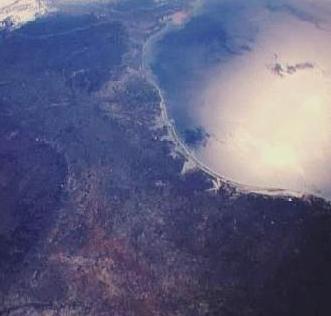 Alvar Nunez Cabeza de Vaca and his companions accidentally became the first Europeans to travel through Texas when they crashed onto Galveston Island after a storm on November 6, 1528. They were the survivors of an expedition led by Panfilo de Narvaez that left Spain in 1527 to conquer and govern Florida. The Narvaez expedition landed in Florida and proceeded some distance inland, leaving instructions for the fleet to follow along the coast, and to await their return at a convenient harbor. But when Narvaez returned to the coast the vessels were gone. His men constructed boats in which they intended coasting along the gulf in hopes of reaching the Spanish settlements in Mexico. The men converted every piece of metal into saws, nails and hammers, and sewed together their shirts for sails. They made cordage of the tails and manes of their horses, then killed the horses and dried the meat for food. They launched their improvised barks upon the waters of the Gulf of Mexico and coasted westward beyond the mouth of the Mississippi until they encountered a great storm. The tempest wrecked or sunk most of the boats. The boat commanded by Cabeza de Vaca was thrown upon a low, sandy island near the shore, Galveston Island.
Alvar Nunez Cabeza de Vaca and his companions accidentally became the first Europeans to travel through Texas when they crashed onto Galveston Island after a storm on November 6, 1528. They were the survivors of an expedition led by Panfilo de Narvaez that left Spain in 1527 to conquer and govern Florida. The Narvaez expedition landed in Florida and proceeded some distance inland, leaving instructions for the fleet to follow along the coast, and to await their return at a convenient harbor. But when Narvaez returned to the coast the vessels were gone. His men constructed boats in which they intended coasting along the gulf in hopes of reaching the Spanish settlements in Mexico. The men converted every piece of metal into saws, nails and hammers, and sewed together their shirts for sails. They made cordage of the tails and manes of their horses, then killed the horses and dried the meat for food. They launched their improvised barks upon the waters of the Gulf of Mexico and coasted westward beyond the mouth of the Mississippi until they encountered a great storm. The tempest wrecked or sunk most of the boats. The boat commanded by Cabeza de Vaca was thrown upon a low, sandy island near the shore, Galveston Island.
Cabeza de Vaca and some of his companions were able to reach the mainland. The survivors were soon reduced to fifteen through the first winter, with lack of food forcing some to resort to cannibalism. Cabeza de Vaca was taken captive by Karankawa Indians. The Karankawa were nomadic tribes that lived in the southern Texas coastal plains bordering the Gulf of Mexico, from Galveston Island to Corpus Christi.
About seven feet tall, the Karankawa usually wore little in the way of clothing. Their tools included stone knives and scrapers. They fashioned crude but functional pottery, and made arrow and spear points from flint and chert stone. The Karankawa’s ferocious disposition and cannibalistic practices made for uneasy relationships with neighboring tribes, but they traded with the Coahuiltecans at the west end of their territory, and with the Caddo and Tonkawa tribes to the north.
Cabeza de Vaca’s Indian captors ascribed to him and some other Spanish captives, the first white men they had ever seen, the power of curing sickness. When afflicted by epidemics, the Karankawas withheld food from the Spaniards to force them to act as healers. Over time Cabeza de Vaca gained status as a shaman and acted as trader between the Karankawas and other tribes. After several years as a captive of the Karankawas, Cabeza de Vaca lived among Coahuiltecan Indians for several years and, having learned several Indian dialects, traded seashells and coral on their behalf.
In 1534, Cabeza de Vaca joined Alonso Castillo Maldonado, Andres Dorantes de Carranza and the Moorish slave Estevanico, all survivors of the Narvaez expedition, in a daring escape from the Indians. They traveled west for months, beyond the coastal plains, to the valley of the Rio Grande, attempting to reach New Spain but not knowing how to get there. Their years among the Indians had taught them how to live off the land, and they trekked past the Pecos River, through the Trans-Pecos region of southwestern Texas. Cabeza de Vaca’s knowledge of various native dialects helped him to communicate with the many different Indian peoples they met along the way. The natives generally welcomed and aided the four strangers, and sometimes offered to lead them to the next village. Their journey took them through unknown territories, across northern Mexico and eventually to the coast of the Gulf of California. In 1536, the four survivors reached a Spanish outpost in Sinaloa, in northwestern Mexico. Cabeza de Vaca then traveled to Mexico City, where he met Hernan Cortes and the new Viceroy, Antonio de Mendoza. His oral and written accounts helped to greatly increase the knowledge of Texas geography. When he eventually returned to Spain, the King rewarded Cabeza de Vaca’s contributions by naming him Governor of the Rio de la Plata region in South America.
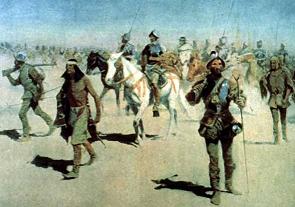 Cabeza de Vaca told of the possibility of gold in New Mexico and mentioned Indians who spoke of a great city in the north. Francisco Vasquez de Coronado led an expedition of three hundred and seventy Europeans and a thousand Indians, who volunteered as guides, servants and scouts, to Cibola in 1540. Franciscan friars joined the expedition and were followed by two hundred and fifty men on horseback, several hundred foot soldiers, Indians and thousands of pack animals. But the expedition only found stone and adobe pueblos. The natives of these villages mentioned other villages east and west of Cibola that possibly contained treasure. Smaller expeditions set out to explore them. During his explorations, Coronado visited a point where Cabeza de Vaca and his companions had probably passed, being told by the local Indians that a small party of white men had been there some time before, among them a shaman who had blessed their buffalo skins.
Cabeza de Vaca told of the possibility of gold in New Mexico and mentioned Indians who spoke of a great city in the north. Francisco Vasquez de Coronado led an expedition of three hundred and seventy Europeans and a thousand Indians, who volunteered as guides, servants and scouts, to Cibola in 1540. Franciscan friars joined the expedition and were followed by two hundred and fifty men on horseback, several hundred foot soldiers, Indians and thousands of pack animals. But the expedition only found stone and adobe pueblos. The natives of these villages mentioned other villages east and west of Cibola that possibly contained treasure. Smaller expeditions set out to explore them. During his explorations, Coronado visited a point where Cabeza de Vaca and his companions had probably passed, being told by the local Indians that a small party of white men had been there some time before, among them a shaman who had blessed their buffalo skins.
One expedition was led by Captain Alvarado who traveled to Cicuique, present Pecos, New Mexico, where he was given an Indian slave known as The Turk, who was from a region he called Quivira. The Turk spoke of riches but purposefully led Alvarado and his men through the High Plains region, in north central Texas, to present day Kansas. The Indian wanted to return safely to his homeland and gather support there to escape his captors. When the explorers learned of The Turk’s deception they executed him.
Other expeditions continued to add to the Spanish knowledge of Texan geography and its native peoples. Coronado’s expedition crossed the Texas Panhandle in 1541-1543. Although Coronado failed to find the fabled cities he sought, his expeditions discovered the physical features of an area ranging from as far north as the Grand Canyon to Texas and California.
While Coronado was looking for treasure in northwestern New Spain, Hernando de Soto led an expedition through the southeast region of Texas and neighboring Louisiana. De Soto discovered the Mississippi River in 1541 and explored its banks. When de Soto was killed by hostile Indians in 1542, Luis de Moscoso became the leader of the expedition and ventured through east Texas but found the land poor and lacking food resources. Moscoso decided to return to the Mississippi where there was corn and materials necessary to build a boat to sail back to New Spain. Another Spanish explorer, Juan de Onate, led an expedition in 1598 in search of wealth in New Mexico and Texas.
Texas Geography
By the start of the seventeenth century, the Spanish had acquired a general knowledge of Texas geography. The Texas Gulf Coast curves from the Sabine River to the northeast to the Rio Grande on the south. Several large, shallow bays reach miles inland, and long narrow barrier islands protect lagoons between the islands and the mainland. The southern Coastal Plains border the Gulf of Mexico. The southwestern Trans-Pecos region includes the Upper Rio Grande Valley. The High Plains region, in north central Texas, includes the northern Panhandle and the Hill Country. The north central Prairies and Lakes region covers the general area between the Brazos and the Trinity rivers. The Piney Woods area lies in eastern Texas, west of the Sabine River.
Settlements in Spanish Texas
Ysleta, near El Paso, became an early Spanish settlement in Texas in 1682. Captain Juan Dominguez de Mendoza and Fray Nicolas Lopez led an expedition in 1684 to gather samples of pearls previously found in west-central Texas during missionary expeditions from New Mexico. They were enticed by renewed rumors of the mythical kingdom of Gran Quivira. On their return, the expedition leaders requested that missionaries and soldiers settle the land.
French explorer Robert de la Salle landed on the Texas coast in 1685. La Salle had intended to settle at the mouth of the Mississippi but due to a navigational error landed nearly 400 miles to the west. He established Fort St. Louis and a colony on banks of the Garcitas Creek near Lavaca Bay. Hostile Karankawa Indians attacked the fort and killed and possibly ate the French colonists except for five children who were taken as captives. A Spanish expedition led by Alonso de Leon came upon the remains of the fort in the spring of 1689.
The pattern of colonization by the Spanish had three components: missions, presidios, and civil communities, which often appeared together, and sometimes were located near pre-existing Indian villages. Missions were religious outposts with the objective to convert, civilize, and educate the natives to become Spanish colonial citizens. Presidios were fortified enclaves, or forts, established to provide a military presence and protect against pirates, Indian attacks, and foreign incursions. The civil communities were hamlets, initially with a few dwellings, that sometimes grew into villages or towns.
In the late seventeenth century, Spanish soldiers and missionaries flowed into Texas from their well-established posts in Mexico. In 1690, they founded the Mission San Francisco de los Tejas east of present-day Crockett, Texas. The missionaries made some progress converting friendly Indians to Catholicism, and the presence of the military helped early settlers cope with less-friendly natives. The Camino Real, or Royal Road, may have reached from Mexico City to St. Augustine, Florida, as early as 1690.
On June 13, 1691, Franciscan Father Damien Massanet christened a site he called San Antonio in a wooded area of spring-fed streams at the southern edge of the Texas Hill Country, near a river first noted by Cabeza de Vaca in 1536. In 1716, Domingo Ramon established there a presidio, San Antonio de Bexar, and in 1718 Spain established the Mission San Antonio de Valero (later called the Alamo). A civil community, San Fernando de Bexar, established nearby in 1731, was settled by Spanish colonists from the Canary Islands. The settlers had to cope with raids by Apache and Comanche Indians, and often depended on military assistance from the presidio for protection. By 1750, the population of San Antonio had grown to about 500.
The Mission Nuestra Senora de Guadalupe de los Nacogdoches was established in Nacogdoches, in east Texas, in 1716, in an area of pines and deciduous forests in eastern Texas. The town of Nacogdoches was founded at the same site in 1779 by Colonel Antonio Gil Y’Barbo.
The Presidio Nuestra Senora del Pilar de Los Adaes was founded in 1721 by the Marquis de Aguayo. It served as an outpost near the frontier with French Louisiana and was located near the Mission San Miguel de Linares de los Adaes, about 30 miles east of the Sabine River, close to present-day Robeline, Louisiana. Manned by about 100 soldiers, Los Adaes was made the capital of the Texas province in 1729. It remained the capital for 44 years.
The village of San Agustin de Laredo was founded in 1755 by Tomas Sanchez in southcentral Texas, on the west end of the Rio Grande plains.
France transferred the Louisiana territory to Spain in 1762. A little more than a decade later, the approximately 500 settlers of Los Adaes, most of whom farmed and ranched along the banks of Spanish Lake, were ordered to relocate to San Antonio. During San Antonio’s nearly half century of development, settlers from Spain, Mexico and the Canary Islands had claimed the best farm and ranch land along the San Antonio River. Some from Los Adaes remained in east Texas along the westward route to the new capital in San Antonio and many others later returned to the old settlements among the Texas pines and back into Louisiana.
New Spain and Texas in 1800
By 1800, the population of all of New Spain was about seven million, the majority Indian, about one fifth white, and one quarter mestizo. At that time New Spain included Guatemala, Mexico, Texas, New Mexico, California, and territories comprising most of today’s southwestern United States. Florida was a separate Spanish territory extending west from the Atlantic coast to the mouth of the Mississippi River.
The northern territories of New Spain were sparsely populated. The population of Texas in 1800, not counting nomadic Indians, was about 7,000, with the total number of residents in the two main towns, San Antonio and La Bahia (renamed Goliad in 1829), adding up to about 3,000. Spanish Texas was bounded by the Rio Grande to the south, the Sabine River to the east, the Red River to the north, and New Mexico to the west. The population of the United States, which in 1800 did not extend to the Gulf of Mexico, was about 5,300,000, of which about one fifth were black slaves.
In 1803, France sold the Louisiana territory, which included parts of northern Texas, to the United States. After the Louisiana Purchase, American families began to migrate to the northern part of Texas that was controlled by the United States.
Independence from Spain
As a result of European Napoleonic wars, France gained control of Spain in 1807, and effectively dominated New Spain for a time. French rule of Spain lasted until 1813, when Joseph Bonaparte was ousted by combined British and Spanish forces. Most of Texas remained under the control of Spain until 1821, when a Mexican insurrection led to New Spain gaining independence from the Spanish Empire.
Settlement of Texas by Families from the United States
 After gaining independence from Spain, the new Mexican government gained control of not only Mexico proper, but also former Spanish territories in North America, including Spanish Texas, New Mexico and California. In an effort to populate some of its sparsely-settled northern land claims, the Mexican government awarded extensive land grants in Texas to thousands of immigrant families from the United States, on the condition, largely ignored, that the settlers convert to Catholicism and assume Mexican citizenship.
After gaining independence from Spain, the new Mexican government gained control of not only Mexico proper, but also former Spanish territories in North America, including Spanish Texas, New Mexico and California. In an effort to populate some of its sparsely-settled northern land claims, the Mexican government awarded extensive land grants in Texas to thousands of immigrant families from the United States, on the condition, largely ignored, that the settlers convert to Catholicism and assume Mexican citizenship.
In 1824, Mexico adopted a new constitution that defined the country as a federal republic with nineteen states and four territories. The former province of Texas became part of a newly-created state, Coahuila y Tejas, whose capital at Saltillo, in northeast Mexico, was far from the former Texas capital at San Antonio.
Continuing an effort initiated by his father, Stephen F. Austin obtained in 1821 a land grant to establish a colony on the Gulf Coast between San Antonio and the Brazos River. Due to government upheavals in Mexico, Austin had to have the grants reauthorized. Marauding Indians and a dearth of formal local authorities posed a threat to peace, and in 1823 Austin organized two companies of Texas Rangers for the common defense. By 1825 Austin, who exercised some degree of civil and military authority, had brought 300 families of settlers from the United States to Texas under his grant.
The population increase due to immigration from the United States was larger than anticipated, and caused the Spanish and Mexican colonists in Texas to be vastly outnumbered by settlers from the United States. To address this situation, the Mexican government implemented several measures in 1830. Further immigration to Texas from the United States was prohibited, property tax laws exempting immigrants were rescinded, and tariffs were increased on goods shipped from the United States. These measures were resented by the recent immigrants and did not have the intended effect, since settlers circumvented or ignored them.
In 1832, General Antonio Lopez de Santa Anna took office as President of Mexico. A year later, Texas settlers called a convention to discuss proposed changes in immigration, judicial, and other political policies. The delegates also wanted Texas to be a separate state from Coahuila and to restore its own capital in San Antonio. They elected Stephen F. Austin to carry a proposed state constitution to Mexico City. Santa Anna approved many of the proposals, but refused to agree to separate Texas from Coahuila. Austin was jailed when it became known to Mexican authorities that he advocated that Texans act unilaterally on statehood.
Texas Rebellion
In 1834, Santa Anna abrogated Mexico’s federal constitution and established a more centralized form of government. The new regime restricted the autonomy of Mexican states and was unpopular in Texas. By then the population of Texas was about 38,000, with the majority being relatively recent settlers from the United States.
As the Mexican government transitioned to centralism in early 1835, wary colonists in Texas began forming Committees of Correspondence and Safety. Santa Anna had become a dictator and was ousting the state Governors and appointing new ones loyal to him. Anahuac, in southeast Texas, became the focal point for discontent when Captain Antonio Tenorio arrived with a small detachment of troops and orders to reestablish the customs house at that site. Local residents accused Tenorio of collecting higher duties than usual and responded by smuggling and refusing to provide supplies for Mexican soldiers. The captain warned his superior in Mexico, General Martin Perfecto de Cos, commander of the Eastern Internal Provinces, of the possibility of revolt, but Cos was preoccupied with a federalist rebellion in Zacatecas.
Tension between Tenorio and Anahuac residents reached a climax in June 1835, when Andrew Briscoe, DeWitt Harris, and William Smith became involved in a scuffle with Tenorio’s troops. Smith was shot dead, and Briscoe and Harris were overpowered and thrown in jail. William B. Travis and other colonists decided that the troops at Anahuac should be disarmed and ordered to leave Texas. Travis raised a company of volunteers and departed for Anahuac. On June 29, 1835, Travis led thirty men in an assault on Tenorio’s garrison, which was quickly forced to surrender. Travis’ action was unpopular, and he released Tenorio and his men and allowed them to proceed to San Antonio.
Mexican Colonel Domingo Ugartechea, who was stationed in San Antonio, took a dim view of the Anahuac incident. He ordered Texans in the town of Gonzales, about 60 miles east of San Antonio, to return a cannon given to them by Mexican authorities. The Texans refused, and Ugartechea sent Lieutenant Francisco Castaneda and 100 dragoons to retrieve it. When Castaneda arrived at the rain-swollen banks of the Guadalupe River near Gonzales, there were just eighteen Texans to oppose him. Unable to cross, Castaneda established a camp, and the Texans buried the cannon and called for volunteers. Several days later, October 2, 1835, reinforcements arrived, and the Texans attacked and forced the larger Mexican force to withdraw.
On October 9, 1835, a group of Texans attacked Mexican forces at the presidio in Goliad. After a thirty-minute skirmish, the Mexican garrison surrendered, leaving the Texans in control of the fort.
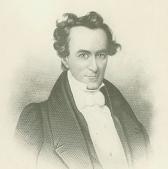 Stephen F. Austin worked to organize the men gathered in Gonzales into a cohesive army. On October 13, Austin led the newly formed Texas Army toward Bexar to engage General Cos and his troops. One week later, Austin’s force of 453 men and two six-pounder cannon initiated a siege of San Antonio.
Stephen F. Austin worked to organize the men gathered in Gonzales into a cohesive army. On October 13, Austin led the newly formed Texas Army toward Bexar to engage General Cos and his troops. One week later, Austin’s force of 453 men and two six-pounder cannon initiated a siege of San Antonio.
Cos, Santa Anna’s brother-in-law, was one of the best field generals in the Mexican Army. He had worked to fortify the town squares in San Antonio and the walls of the Alamo, a mission-turned-fort near the town. By October 26, Cos’s men had mounted 12 cannon in San Antonio and at the Alamo. Additional Mexican soldiers arrived in San Antonio, and on October 24 the Mexican garrison stood at 751 men.
Although the Mexican soldiers attempted to restrict access to and from San Antonio, James Bowie was able to leave his home and join the Texans. Juan Seguin, a government official in San Antonio, arrived with 37 Tejanos on the morning of October 22, and later that day an additional 76 men joined the Texan Army from Victoria, Goliad, and the ranches south of San Antonio. The presence of the Tejanos proved that the Texan response was not simply an overreaction by American immigrants. During the siege, both sides received reinforcements. Austin’s force grew to 600 and Cos’s to 1,200.
In San Felipe, delegates at a meeting of the Consultation government agreed to fight to uphold the Mexican Constitution of 1824 rather than Texan independence, and decided to name Samuel Houston General-in-Chief of all Texas forces, except those fighting around San Antonio. Stephen Austin was authorized to travel to the United States to gain support for their cause, and Edward Burleson was elected Major General and Commander-in-Chief of the Volunteer Army to replace Austin.
General Burleson ordered a two-column attack. One attack was to be carried out by Ben Milam’s troops, and the other was to be carried out by those of Colonel Francis W. Johnson. On December 5, Milam and Johnson launched a surprise attack and seized two houses in the Military Plaza. The Texans fortified the houses, dug trenches, and destroyed nearby buildings. The attack continued on December 7. Milam was killed leading the attack, but his force captured another foothold in the city. Colonel Johnson subsequently took command of Milam’s men and continued the street fighting, gradually driving the Mexicans back into the city. General Cos withdrew into the Alamo, where he was joined by Colonel Ugartechea and 600 reinforcements. Cos entrenched his position, and Texan artillery pounded the fortified mission.
Inside the Alamo, General Cos presented a plan for a counterattack to his men, but cavalry officers believed that they would be surrounded by Texans and refused to obey their orders. About 175 soldiers from four of the cavalry companies rode away from the mission. With his force reduced, Cos decided to ask for a truce and negotiate a surrender. An agreement was reached whereby Mexican troops could remain in the Alamo for six days to prepare for the retreat to Mexico. Each Mexican soldier would receive a musket and ten rounds of ammunition, and the Mexicans would take with them one four-pound cannon and ten rounds of powder and shot. About 150 Mexican soldiers and 18 Texans were killed or wounded during the battle.
In November 1835, the Texas governing council authorized a navy and acquired four ships. The small Texas navy was successful in carrying out attacks against Mexican shipping and denied Mexico the ability to supply its troops in Texas by sea.
Many of the Texans believed that the war was over. Burleson resigned his leadership of the army on December 15 and returned to his home. Many of the men did likewise, and Johnson assumed command of the soldiers that remained.
In Goliad, a meeting of 92 men, local citizens and members of Captain Phillip Dimmitt’s troops, produced a document known as the Goliad Declaration of Independence. Signed on December 20, 1835, this was the first Republic of Texas declaration of independence.
The Mexican Army of Operations
In December 1835, General Santa Anna assembled a 6,000-man Army of Operations to put down the insurrection in Texas. Santa Anna moved quickly on hearing of Cos’s defeat, and began to move his Army of Operations toward Texas.
General Jose Francisco Urrea marched his troops along the Gulf coast and moved toward Texan forces at Goliad. Another part of the Mexican army, under Santa Anna’s personal command, arrived in San Antonio on February 23, 1836.
The Battle of the Alamo
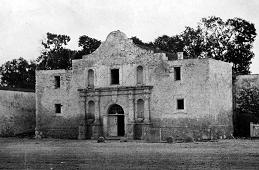 The Texan garrison in San Antonio was unprepared for the arrival of the Mexican army and had to quickly gather food from the town to supply the Alamo. By late afternoon San Antonio was occupied by about 1,500 Mexican soldiers. Texas army troops under the command of William B. Travis, and volunteers led by Jim Bowie took refuge in the Alamo. The Mexican army besieged the stronghold and used artillery against it. There were several skirmishes, but they had little effect. In the early hours of March 6, the Mexican army, its strength grown to about 2,000 men, attacked the fortified Alamo Mission.
The Texan garrison in San Antonio was unprepared for the arrival of the Mexican army and had to quickly gather food from the town to supply the Alamo. By late afternoon San Antonio was occupied by about 1,500 Mexican soldiers. Texas army troops under the command of William B. Travis, and volunteers led by Jim Bowie took refuge in the Alamo. The Mexican army besieged the stronghold and used artillery against it. There were several skirmishes, but they had little effect. In the early hours of March 6, the Mexican army, its strength grown to about 2,000 men, attacked the fortified Alamo Mission.
The Mexicans rushed toward the mission and twice applied scaling ladders to the walls, but were beaten back. Casualties mounted on both sides. A third attempt to breach the defenses was successful. Mexican troops succeeded in mounting the walls, and poured over in overwhelming numbers. Fighting became disorganized and took the form of hand-to-hand combat. All of the Texan defenders, 189 men, were killed, including James Bowie, David Crockett and William Travis.
Wounded prisoners were brought to Santa Anna, who had them shot immediately, but certain non-combatants were spared, including some women, a baby, and a servant of Travis. The attack took a heavy toll on Santa Anna’s army. About 600 of the Mexican soldiers involved in the assault were killed or wounded.
Texas Declaration of Independence
The original aim of the Texan rebellion was to redress perceived tax and legal issues and to establish Texas as a separate Mexican state under the Constitution of 1824. However, by early 1836, it was clear that Santa Anna had no intention of yielding to federalist demands, and the sentiments of Texas insurrectionists had shifted toward self-determination.
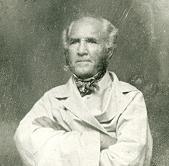 On March 1, 1836, Texas delegates met at Washington-on-the-Brazos, in east Texas, and formally announced Texas’ intention to separate from Mexico. They drafted the Constitution of the Republic of Texas and organized an interim government to serve until an officially elected government could be put in place. The delegates declared independence on March 2.
On March 1, 1836, Texas delegates met at Washington-on-the-Brazos, in east Texas, and formally announced Texas’ intention to separate from Mexico. They drafted the Constitution of the Republic of Texas and organized an interim government to serve until an officially elected government could be put in place. The delegates declared independence on March 2.
Sam Houston, in command of the main Texan army, left Gonzales in March 13, after learning of the fall of the Alamo, and slowly retreated eastward. Despite frequent dispatches from Texas Interim President David G. Burnet, General Houston was unwilling to engage a well-armed and numerically superior enemy until favorable conditions presented themselves.
On March 14, a Texan regiment of about 150 men under Lieutenant Colonel William Ward fought a battle at Refugio against elements of the Mexican army led by General Jose Urrea. Ward was defeated, but managed to escape with most of his men.
The Texas constitution was adopted on March 16 at Washington-on-the-Brazos. The delegates worked until March 17, when they had to flee, along with the townspeople, to escape the approaching Mexican Army.
The Goliad Massacre
Texans held Goliad until March 1836, when the Texan garrison under Colonel James Fannin was defeated at the nearby Battle of Coleto. The Texan survivors, promised safe passage upon surrender, were imprisoned at the presidio.
William Ward’s regiment fought unsuccessful skirmishes against Urrea’s forces near Victoria on March 21st. Forced to surrender after another encounter near Lavaca Bay, Ward and his remaining troops were imprisoned at the Goliad presidio. On March 27, 1836, under Santa Anna’s direct orders, 342 Texans held at the Goliad presidio, including Ward and Fannin, were executed in the Goliad Massacre. The Mexicans collected the bodies into huge piles and burned them.
The mass killings were intended to instill fear among the revolutionaries and discourage them, but, together with the Battle of the Alamo, branded Santa Anna and the Mexicans with a reputation for cruelty and aroused the fury of the people of Texas.
Texan Retreat
After abandoning the provisional capital at Washington-on-the-Brazos, Burnet and the Texas government moved hastily towards the coast, reestablishing key governmental functions in Harrisburg and later in Galveston. Hearing of the massacres at Goliad and the Alamo, thousands of panicked colonists, American and Tejano, fled from the advancing Mexican Army.
By early April, General Santa Anna, determined to find and destroy the remaining Texan forces, had divided his army in a three-pronged attack: a northern army, under General Antonio Gaona, the central army under Santa Anna and General Joaquin Ramirez y Sesma, and a coastal army under command of General Urrea.
Meanwhile, the Texas army had continued its retreat. On March 25, news of the massacre at Goliad led several men to leave the army to assist their families in fleeing the Mexican forces. General Sam Houston spent the next few weeks attempting to train the recruits into something resembling a disciplined army, and then continued his march east toward the Sabine River and the border with Louisiana.
After General Gaona took the town of Bastrop, he was ordered to proceed to the Brazos River. Santa Anna took the central column of his army to the east, in pursuit of the Texans. Not fully aware of each other’s positions, Santa Anna and Houston both moved toward San Jacinto Bay, at the point where both Buffalo Bayou and the San Jacinto River flowed into it.
The Battle of San Jacinto
Near San Jacinto Bay, Erastus “Deaf” Smith, a scout of the Texan army, forded a stream on horseback and captured a Mexican courier. On April 18, Houston learned the whereabouts of Santa Anna’s contingent from documents carried by the captured courier. Believing that Santa Anna’s detachment did not outnumber his own force and was perhaps slightly smaller, Houston pursued the Mexicans to Buffalo Bayou, in southeast Texas, and continued the march toward Lynch’s Ferry on April 20.
General Houston set up camp at San Jacinto, about 30 miles north of Galveston, in a dense grove of oak trees between the Harrisburg-Lynchburg road and Buffalo Bayou. The configuration of the marsh was such that anyone going to the ferry had to pass close to this wood.
Arriving at San Jacinto, Santa Anna tried to draw the Texans he had been after for a month into battle. That afternoon, his forces opened fire with a cannon on the Texan camp. Texan General Sidney Sherman, Commander of the Second Regiment, led elements of the cavalry in an attempt to capture the Mexican cannon. The resulting skirmish almost caused a full scale clash. Mirabeau Buonaparte Lamar distinguished himself during that fight by his heroic rescue of two surrounded Texans.
After the Texan attempt to take the field gun, Santa Anna moved his forces back from the ridge where they had been, about 200 yards to the east. On the night of April 20, the two armies were only three quarters of a mile away from each other. A long-delayed decisive battle was about to take place. Santa Anna built up defenses and prepared his men for an attack he expected the Texans would launch first thing in the morning, but the dawn attack did not materialize.
On the morning of April 21st Houston learned that General Martin Perfecto de Cos had crossed over Vince’s Bridge with reinforcements for Santa Anna. Realizing he had lost any numerical superiority he may have had, Houston ordered Erastus Smith to destroy the bridge, an action that prevented further increases of Mexican ranks, and also prevented retreat by both the Mexican and Texan armies.
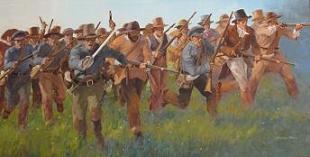 About 3:30 in the afternoon, General Houston distributed his 900 men in battle array. Sidney Sherman’s and Edward Burleson’s regiments were to the left, the artillery commanded by George W. Hockley at the center, and Henry Millard’s infantry and the cavalry on the right. Houston put Mirabeau B. Lamar, who had earned a battlefield promotion to Colonel, in command of the cavalry. Shielded by trees and a rise in the terrain, the Texans were able to advance unnoticed until they were only 200 yards from the Mexican camp. The Texan artillery and sharpshooters opened fire. Then, with the cries “Remember the Alamo!” and “Remember Goliad!” ringing along their lines, the Texans swooped down on the surprised Mexican troops, which numbered about 1,600. In the next 18 minutes, the lightning-fast strike destroyed Santa Anna’s army as a fighting force.
About 3:30 in the afternoon, General Houston distributed his 900 men in battle array. Sidney Sherman’s and Edward Burleson’s regiments were to the left, the artillery commanded by George W. Hockley at the center, and Henry Millard’s infantry and the cavalry on the right. Houston put Mirabeau B. Lamar, who had earned a battlefield promotion to Colonel, in command of the cavalry. Shielded by trees and a rise in the terrain, the Texans were able to advance unnoticed until they were only 200 yards from the Mexican camp. The Texan artillery and sharpshooters opened fire. Then, with the cries “Remember the Alamo!” and “Remember Goliad!” ringing along their lines, the Texans swooped down on the surprised Mexican troops, which numbered about 1,600. In the next 18 minutes, the lightning-fast strike destroyed Santa Anna’s army as a fighting force.
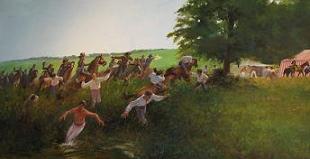 The Mexicans were professional soldiers, trained to fight in ranks, exchanging volleys with their opponents. They were suddenly confronted with mounted horsemen and running infantry that engaged them in combat at close quarters. The Texans fought with a desperate ferocity. They knew Santa Anna killed all prisoners. For the Texans, the only alternative to victory was death.
The Mexicans were professional soldiers, trained to fight in ranks, exchanging volleys with their opponents. They were suddenly confronted with mounted horsemen and running infantry that engaged them in combat at close quarters. The Texans fought with a desperate ferocity. They knew Santa Anna killed all prisoners. For the Texans, the only alternative to victory was death.
Santa Anna’s officers were unable to effectively form their units. The confused Mexican soldiers were routed, and many ran from the bloodied grass field into the marshes along the river and met their death in the water. Some Mexicans rallied and attempted to push the Texans back, but they were ill-equipped to fight well-armed Texan frontiersmen in what was by then hand-to-hand combat. The Mexicans suffered 630 killed, 208 wounded, and 730 taken prisoner. The Texan Army lost 9 killed or mortally wounded, and 30 were less seriously wounded. Among the wounded was General Houston, who was shot in the ankle.
A small number of Mexican soldiers, including Santa Anna, escaped from the battle and moved toward Mexican Army elements west of the Brazos River. The next day, a Texan patrol discovered Santa Anna, who had disguised himself by donning a ragged cotton jacket, cotton pants, and a battered hide cap, and brought him into camp at San Jacinto, unaware at first of the importance of their prisoner. Many in the Texan camp wished to execute Santa Anna on the spot, but Houston spared his life. As part of his surrender agreement, Santa Anna ordered the Mexican troops remaining in Texas to immediately retreat south of the Rio Grande.
The Republic of Texas
On May 14, 1836, the public and private treaties of Velasco were signed by Interim Texas President David G. Burnet and Antonio Lopez de Santa Anna. The documents confirmed the Mexican retreat and declared an end to the war. Santa Anna was put on a ship that would take him to Veracruz, but before it could sail, Santa Anna was taken prisoner by volunteer militiamen just arrived from the United States. Defying the wishes of the Texas provisional government, they held Santa Anna prisoner for six months and then took him to Washington, D.C. Santa Anna finally returned in disgrace to Mexico in early 1837.
 Sam Houston was elected President of Texas in 1836 and served two terms, 1836-1838 and 1841-1844. Mirabeau B. Lamar served as President from 1838 to 1841. In 1839, the Republic’s capital was moved to the town of Waterloo, by the Colorado River, and the town was renamed Austin. The 1836 flag of the Republic had a single golden five-pointed star on an azure field.
Sam Houston was elected President of Texas in 1836 and served two terms, 1836-1838 and 1841-1844. Mirabeau B. Lamar served as President from 1838 to 1841. In 1839, the Republic’s capital was moved to the town of Waterloo, by the Colorado River, and the town was renamed Austin. The 1836 flag of the Republic had a single golden five-pointed star on an azure field.
Mexico did not honor the treaty of Velasco, and Mexican armed forces carried out intermittent cross-border attacks throughout most of the existence of the Republic of Texas. Some Mexican offensives penetrated as far as San Antonio, but none met with long-term success, and Texas prospered as an independent nation. The United States, France, Belgium, Yucatan, and the Netherlands established diplomatic relations with the new Republic.
In 1840, Laredo, in southcentral Texas, briefly became the capital of the independent Republic of the Rio Grande, set up by local insurrectionists in opposition to the central Mexican government. Mexico subsequently brought back this area under its control by military force.
Admission into the United States
On July 4, 1845, a Texas convention voted to join the United States. President Polk and the United States Congress strongly favored annexation and agreed to take Texas into the Union, setting the southern boundary of the new state at the Rio Grande, as defined in the treaty of Velasco. On December 29, 1845, President Polk approved the admission of Texas to the Union as the 28th state.
 The United States agreed to assume the Texas national debt, in exchange for Texas ceding rights to claimed territories outside its state boundaries (parts of current New Mexico, Colorado, Kansas, Oklahoma, and Wyoming). There were other unusual provisions to the annexation. With the consent of the state of Texas, up to four additional states could be created from its territory, and Texas did not have to give any of its public lands to the federal government. The Texas state flag had a single white five-pointed star on a vertical blue stripe at the base, and two horizontal stripes, one red and one white.
The United States agreed to assume the Texas national debt, in exchange for Texas ceding rights to claimed territories outside its state boundaries (parts of current New Mexico, Colorado, Kansas, Oklahoma, and Wyoming). There were other unusual provisions to the annexation. With the consent of the state of Texas, up to four additional states could be created from its territory, and Texas did not have to give any of its public lands to the federal government. The Texas state flag had a single white five-pointed star on a vertical blue stripe at the base, and two horizontal stripes, one red and one white.
The admission of Texas into the United States and other border disputes led to hostilities between the United States and Mexico starting in May, 1846. Mexico did not relinquish its claims to Texas until the Treaty of Guadalupe Hidalgo ended the Mexican-American War in 1848. During the war, Laredo was occupied by the Texas Rangers. Together with other disputed territories, the Laredo area was returned to Texas at the end of the war. After hostilities were concluded, Mexico also ceded New Mexico, Arizona, Nevada, California, Utah and parts of Colorado, Wyoming, Kansas, and Oklahoma to the United States.
The San Jacinto Monument
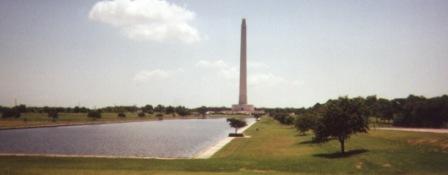 The San Jacinto Battleground State Historic Site, completed in 1939, commemorates the Battle of San Jacinto. The reflecting pool to the west of the monument is on the main axis of the Texan advance. The Mexican camp was situated about 200 yards east of the monument. Further east was a marsh area.
The San Jacinto Battleground State Historic Site, completed in 1939, commemorates the Battle of San Jacinto. The reflecting pool to the west of the monument is on the main axis of the Texan advance. The Mexican camp was situated about 200 yards east of the monument. Further east was a marsh area.
The star at the top of the obelisk rises 570 feet above ground in La Porte, Texas, near the city of Houston. An elevator gives access to an observation deck just under the star. The museum at the base of the monument preserves significant historical materials relating to the 1836 battle and the history and culture of Texas and New Spain.
|